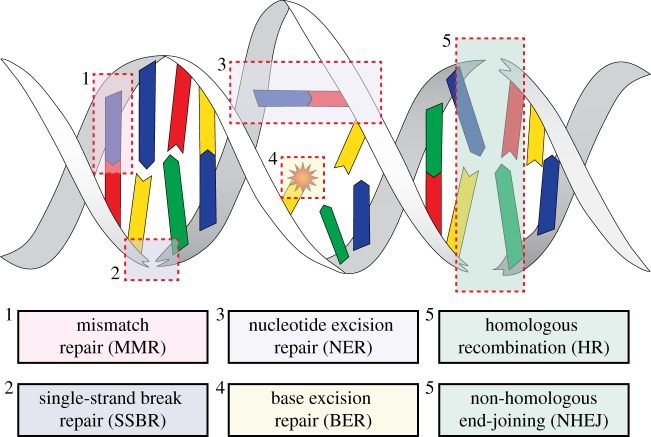Figure 1.
Different types of DNA lesions and corresponding DNA repair systems. Distinct DNA lesions have distinct consequences for a cell. Nucleotide substitutions followed by misreplication lead to accumulation of mutations and chromosomal aberrations, increasing the risk of cancer development. By contrast, bulkier lesions can also block replication and transcription, leading to cell-cycle arrest and, possibly, cell senescence or apoptosis. To avoid this, cells have evolved complex, highly conserved DNA repair systems capable of responding to specific types of lesions. Base mispairs (1) and short deletions/insertions are repaired by mismatch repair (MMR). Single-strand breaks (2) are repaired by complex SBBR cascades. Helix-distorting lesions, such as cyclobutane pyrimidine dimers (3), are repaired by the nucleotide excision repair (NER) pathway. Oxidative lesions and small alkylation products (4) are repaired by base excision repair (BER). Highly cytotoxic double-strand breaks (5) are either repaired by the efficient but error-prone non-homologous end-joining (NHEJ) pathway or by the precise homologous recombination (HR) pathway.

